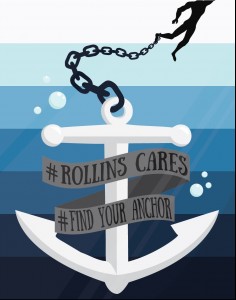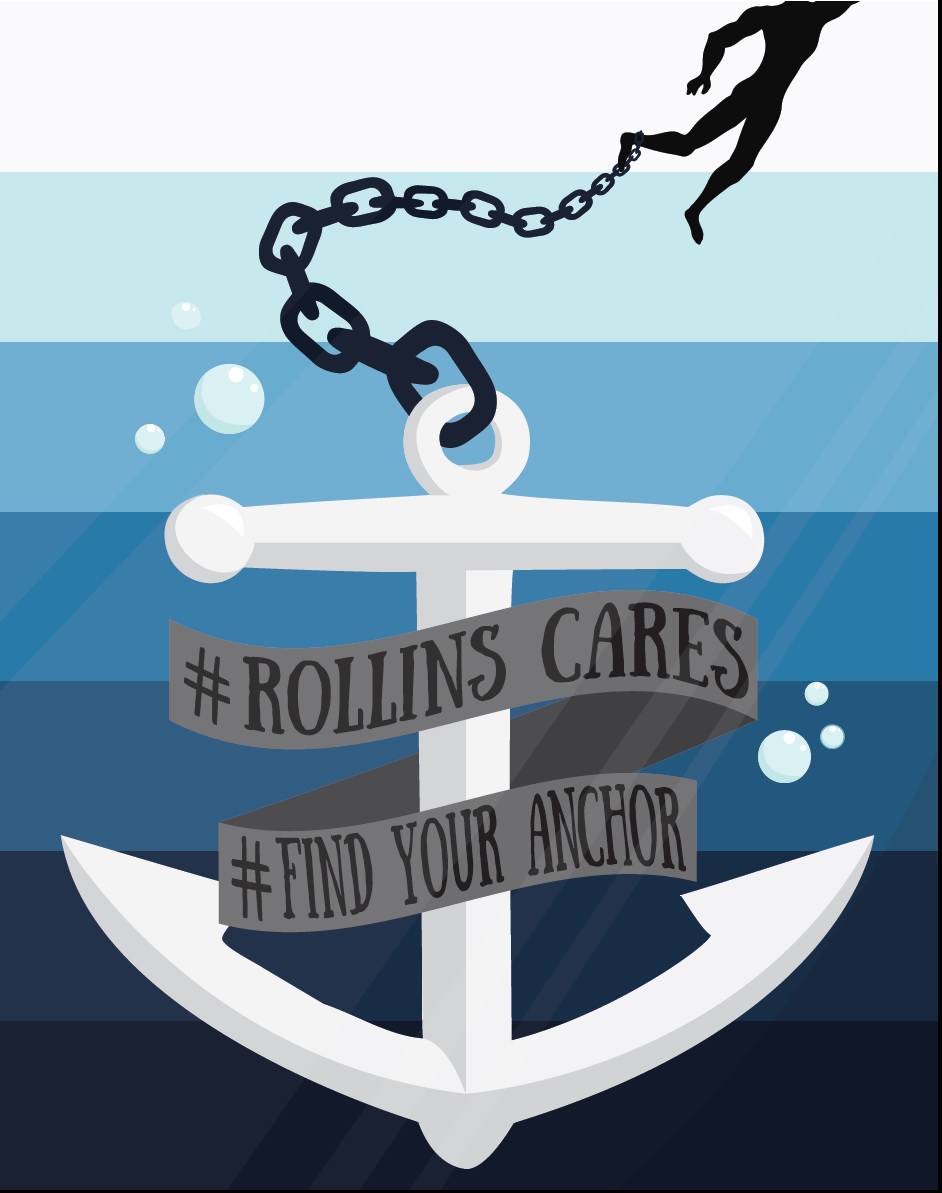
“If you love Rollins,” said Peter Ruiz ’15, “critique it. In my opinion, critique is an act of love itself.” Ruiz, Olivia Matthews ’15, Jamaica Reddick ’15 and I were sitting in the warm comfort of Smart Coffee discussing the recent #RollinsCares trend that emerged on Facebook in late December.
Indeed, Ruiz’s words spoke about a four-year-long personal history with this particular act of love. He and many other students involved had never been shy about sharing their critical opinions of Rollins policy and presence, nor should they be.
Accompanying the hashtag phenomenon that has swept both the Rollins student body and the nation, these past few months have seen a poignant student-led effort to enact change and raise consciousness as well as a school-wide administrative response to issues regarding diversity and inclusion within Rollins.
The #RollinsCares hashtag was originally started by Reddick, a senior theater major and a voice for student activism, who initially hoped for her and her peers’ voices to be heard and acknowledged. The tag’s original purpose was to serve as a platform for students to share their experiences of classism, racism, homophobia, sexism, anti-semitism, and street/online harassment within the Rollins community and bring these issues to the attention of students, faculty, staff, and administration.
“It spread faster than any of us were expecting,” observed Matthews, another senior theater major, and one of the first voices to jump in on the #RollinsCares trend. Her aspiration for the crusade was not just to attract the attention of the Rollins community, but to engage her peers in challenging the affliction of hate speech and the lack of truly safe spaces on campus.
“We need more people to care. We need more people to want to understand, and we need more advocates on campus. Not just people who care, but who actively care. The goal of the hashtag is to get people to actively intervene. It seems as if it’s always up to the same people to speak up, but true support involves being vocal,” said Matthews.
Of course, it is possible that these incidences of prejudice and verbal violence may be isolated to a small minority of students operating under the guise of anonymity, but even if that is the case, the truth is that any endeavor made by the larger student body to condemn or even recognize these issues remains to be seen.
The current state of affairs on campus evokes the old Desmond Tutu adage: “If you are neutral in the face of injustice, you have chosen the side of the oppressor.” Too many students as well as staff members on the Rollins campus are not speaking up about the discrimination and harassment that happens on this campus on an almost daily basis; the #RollinsCares hashtag has served many purposes, but most notably it has opened up a Pandora’s Box of hellish tales of the frequent microaggressions and blatant hostilities experienced by minority students.
Peers on Facebook used the #RollinsCares tag along with #JustPWIThings (the acronym meaning Privileged White Institution) to share personal experiences of racism, fat shaming, homophobia, hate speech, and slurs within the Rollins community both shared online and shouted from vehicles and windows.
For those of you who have yet to see any of the #RollinsCares posts, here are just a few powerful examples:
“Students of color—specifically black students making up 2-3% of Rollins’ population—are heavily featured on posters advertising our ‘diversity.’ Meanwhile, Rollins has yet to make a statement about the hate speech directed at black protestors, during #blacklivesmatter protests” (Reddick).
“Walking down the street with your roommate and having students scream out f*ggot at you” (Ruiz).
“‘Can someone please tell RIP these fat girls aren’t funny?’ Having someone anonymously attempt to diminish my craft and talent by calling out my size on Rollins Confessions” (Cailin Dornbush ’15).
“Being told that the only reason you were successful or got something was because you’re a ‘minority,’ not because you’re smart, talented, hardworking, etc. . .” (Matthews ‘15).
“Having a friend relay to you that a professor called them a tr*nny in class as a joke” (Ruiz).
Ruiz even received a physical threat accompanied with a derogatory slur in his Rollins mailbox. If there is one common denominator between these incidences of hate pervading the Rollins campus, it is that they always occur under the pretext of anonymity.
This makes it difficult to punish the individual and necessary to address the root of the problem: to require that students and staff step out of their privilege and address Rollins as an institution pervaded by discrimination.
Indeed, the administration has begun to make efforts toward creating a more inclusive environment on campus in response to the most recent Campus Climate Survey.
Michele Meyer, the Assistant Vice President of Student Affairs, shared her opinion on Rollins’ responsibility to address these issues: “We need to continue to educate our entire community on diversity and inclusion—faculty, staff, and students. There is no place at Rollins for individuals or groups that intentionally undermine, attack, or harm other individuals, groups, or our campus community.”
Meyer and the Diversity Advisory Council (DAC) have been working to back up these grand visions of change through the implementation of internal efforts like the #RollinsHeardYou campaign and the #downvotehate hashtag, which were designed to foster the growth of “a campus where [students] can participate in civil discussions” with the ability to change popular attitudes and behavior.
The truth is, issues of hate speech and harassment—particularly those dealing in racism, homophobia, classism, ableism, etc.—are issues that require more than surface-level community discussion to be eradicated.
Reddick proposes that action needs to happen on an even larger scale if true change is to occur, suggesting that “the goal is to make it a larger conversation, not just within our institution but in institutions of higher learning in general.”
The fact is that we all play a part in making this happen, and initiatives like #RollinsCares are the first step in implementing change in our community.
Whether it be at the personal level, such as confronting your peers and being an advocate against hate and prejudice on campus, or at the institutional level, in addressing racism, homophobia, classism and other systems of oppression at large, conversation and criticism has to happen within our campus if we want to see any significant change.
It is not a matter of condemning Rollins—in the last moments of my interview with Ruiz and Matthews, they left me with a profound expression of hope for the future: “We know Rollins can do better, be better, for everybody. No institution is perfect, by any means.”
Change can only happen if we work together as students, staff, and administration united. The first step requires speaking out against and sharing experiences of discrimination and hate; it is up to you.

#RollinsCares Tackles Unspoken Issues
More from FeaturesMore posts in Features »






Be First to Comment